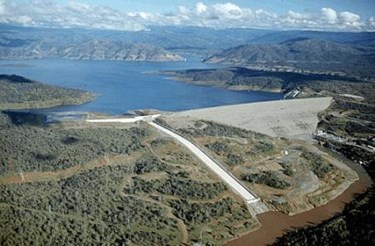A Life Sciences Lesson From Lake Oroville

By Bob Marshall, Chief Editor, Med Device Online

Dam! That was close! Just a week ago, residents of California’s Butte County, Yuba City, and Marysville were ordered to evacuate their homes as a precaution due to the possible failure of Oroville Dam. State water and government officials indicated that one million acre-feet of water could have been released if the dam had failed. Thankfully, that did not happen.
It’s interesting to think about the tremendous amount of energy stored behind the dam, but also to realize all of that water was gathered drop by drop as an unusually high amount of rainfall flowed into Lake Oroville from its tributaries. This reminded me of an event I attended last month sponsored by BioBreakfast and the Pittsburgh Technology Council — two significant tributaries to life science development in Pennsylvania.
The BioBreakfast is a weekly gathering of individuals in the Pittsburgh life sciences sector. It provides an opportunity for medical experts, university researchers, attorneys, and consultants to interact with professionals from large and small life science companies. The breakfasts spur informal networking so people can build new relationships, as well as help participants identify opportunities and individuals they can work with to advance ideas.
On Jan. 17, the VIP speaker at BioBreakfast was Craig Tucker, VP of Policy & Public Affairs for Life Sciences PA (LSPA). Tucker oversees the strategic direction for LSPA's state and federal policy agendas — maintaining and securing new local, national, and international partnerships — and assuring that the voices of LSPA member companies are heard in both the state capital and in Washington, D.C. He briefed everyone on what to expect as the Trump administration takes office, and shared various information about life science funding initiatives in Pennsylvania and other states.
Tax Incentives Provide Streams Of Innovation
One of the incentives about which Tucker spoke was the Keystone Innovation Zone (KIZ) Tax Credit Program in Pennsylvania. This program provides tax credits to for-profit companies that are less than eight years old and operate in specific, targeted industries within the boundaries of a KIZ. With a total pool of up to $15 million in tax credits available to KIZ companies annually, the KIZ tax credit program contributes to the ability of early-stage companies, located within the defined zones, to grow. The tax credit is limited to $100,000 annually per KIZ company, but every drop of funding adds up.
The goals of Keystone Innovation Zones, tax incentives, and groups like BioBreakfast and the Pittsburgh Technology Council are to foster collaboration and help to develop an ecosystem that ultimately provides economic benefit and improves quality of life in the region. Looking around the room at that BioBreakfast that morning, it was obvious that this was a collaborative group, working together to learn from one another and drive life science growth in the region. To wit: At one table sat Larry Zana, CEO of Qrono and a frequent attendee at the BioBreakfast. Qrono, a company that reformulates FDA-approved drugs and creates long-acting injectable medications with improved clinical and economic benefits, has received KIZ tax incentives for the past four years.
Hiring Incentives Fill The Employment Pool
Many of the incentives available to high-tech industries, like life sciences, are aimed at job creation. Former Massachusetts governor Deval Patrick famously called upon the state legislature to invest $1 billion in life sciences over the decade that began in 2008. His goal was to create 250,000 new jobs in that state. I’ve not seen any statistics indicating the initiative is on target to achieve its job creation goal, but it would be difficult to argue that Massachusetts isn’t a leader — if not the leader— in life sciences.
LSPA’s Tucker shared that one of the programs fed by the $1 billion Massachusetts investment is an internship challenge. The Massachusetts Life Sciences Center’s (MLSC) Internship Challenge is a workforce development program focused on enhancing the talent pipeline for Massachusetts companies engaged in life sciences. Companies can hire up to two interns per program year, but have the option to hire up to two additional interns who are enrolled in a two-year, community college, or certificate program. The MLSC will reimburse eligible companies up to $8,160 per intern at the conclusion of the internship.
This program is a great way for companies to get some “free” help while providing real-word experiences for students or recent graduates. In my previous role as a medical device consultant, my company made use of a number of interns each year, and I was always amazed at how bright they were and how much they learned and grew during their internship. I’m confident that we received a lot of value for the wages that were paid, but imagine getting that kind of help for free!
Avoiding The Financial Spillway
So what were the takeaways from the event? Those of us who work in the life science field are very lucky. The desire to create jobs, spur economic development, and improve the quality of life for everyone creates strong incentives to support life sciences and medtech. States will compete against one another to attract more life science business and to retain the business they already have.
While competition is healthy, the industry must be responsible in consuming the incentives that are made available. Sometimes, you have to make the best deal that you can, and for the sake of stability, show a little loyalty and appreciation for the economic entities that have helped you to take your business to the next level.
